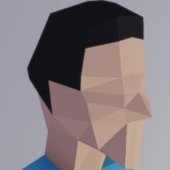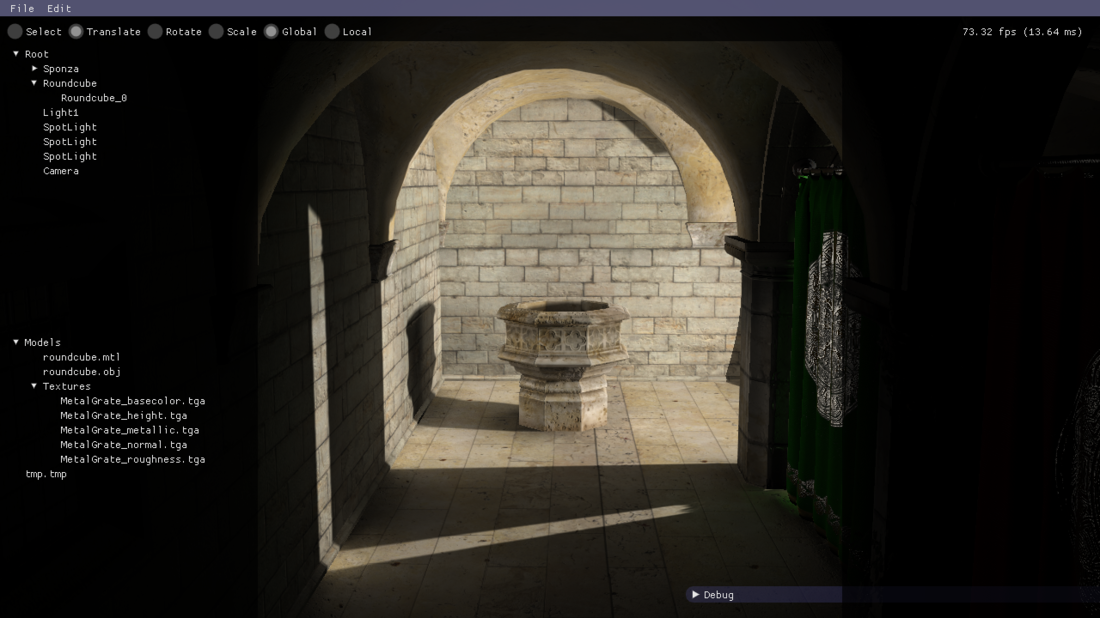The Witness tool to get automatic UVs is on github: https://github.com/Thekla/thekla_atlas
But Microsofts UV Atlas is also pretty nice, maybe better: https://github.com/Microsoft/UVAtlas
Form that you could get a 'surfel' representation of the scene (disks with the area and the normal for each lightmap texel).
Then calculating diffuse lighting is easy to understand, like my 'educational' code below. Tracing for visibility is missing, if you add this with some tree for acceleration you already have a solution. (each call To simulateOneBounce adds one bounce so accuracy increases.)
struct Radiosity
{
typedef sVec3 vec3;
inline vec3 cmul (const vec3 &a, const vec3 &b)
{
return vec3 (a[0]*b[0], a[1]*b[1], a[2]*b[2]);
}
struct AreaSample
{
vec3 pos;
vec3 dir;
float area;
vec3 color;
vec3 received;
float emission; // using just color * emission to save memory
};
AreaSample *samples;
int sampleCount;
void InitScene ()
{
// simple cylinder
int nU = 144;
int nV = int( float(nU) / float(PI) );
float scale = 2.0f;
float area = (2 * scale / float(nU) * float(PI)) * (scale / float(nV) * 2);
sampleCount = nU*nV;
samples = new AreaSample[sampleCount];
AreaSample *sample = samples;
for (int v=0; v<nV; v++)
{
float tV = float(v) / float(nV);
for (int u=0; u<nU; u++)
{
float tU = float(u) / float(nU);
float angle = tU * 2.0f*float(PI);
vec3 d (sin(angle), 0, cos(angle));
vec3 p = (vec3(0,tV*2,0) + d) * scale;
sample->pos = p;
sample->dir = -d;
sample->area = area;
sample->color = ( d[0] < 0 ? vec3(0.7f, 0.7f, 0.7f) : vec3(0.0f, 1.0f, 0.0f) );
sample->received = vec3(0,0,0);
sample->emission = ( (d[0] < -0.97f && tV > 0.87f) ? 35.0f : 0 );
sample++;
}
}
}
void SimulateOneBounce ()
{
for (int rI=0; rI<sampleCount; rI++)
{
vec3 rP = samples[rI].pos;
vec3 rD = samples[rI].dir;
vec3 accum (0,0,0);
for (int eI=0; eI<sampleCount; eI++)
{
vec3 diff = samples[eI].pos - rP;
float cosR = rD.Dot(diff);
if (cosR > FP_EPSILON)
{
float cosE = -samples[eI].dir.Dot(diff);
if (cosE > FP_EPSILON)
{
float visibility = 1.0f; // todo: In this example we know each surface sees any other surface, but in Practice: Trace a ray from receiver to emitter and set to zero if any hit (or use multiple rays for accuracy)
if (visibility > 0)
{
float area = samples[eI].area;
float d2 = diff.Dot(diff) + FP_TINY;
float formFactor = (cosR * cosE) / (d2 * (float(PI) * d2 + area)) * area;
vec3 reflect = cmul (samples[eI].color, samples[eI].received);
vec3 emit = samples[eI].color * samples[eI].emission;
accum += (reflect + emit) * visibility * formFactor;
}
}
}
}
samples[rI].received = accum;
}
}
void Visualize ()
{
for (int i=0; i<sampleCount; i++)
{
vec3 reflect = cmul (samples[i].color, samples[i].received);
vec3 emit = samples[i].color * samples[i].emission;
vec3 color = reflect + emit;
//float radius = sqrt (samples[i].area / float(PI));
//Vis::RenderCircle (radius, samples[i].pos, samples[i].dir, color[0],color[1],color[2]);
float radius = sqrt(samples[i].area * 0.52f);
Vis::RenderDisk (radius, samples[i].pos, samples[i].dir, color[0],color[1],color[2], 4); // this renders a quad
}
}
};










